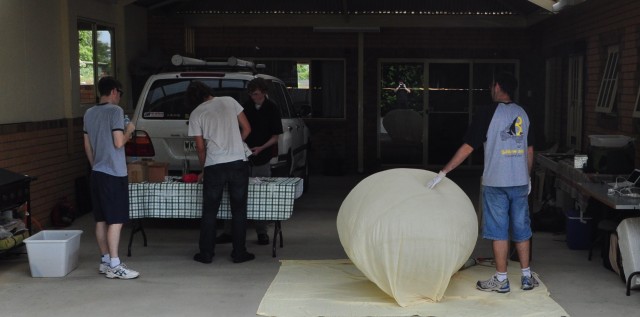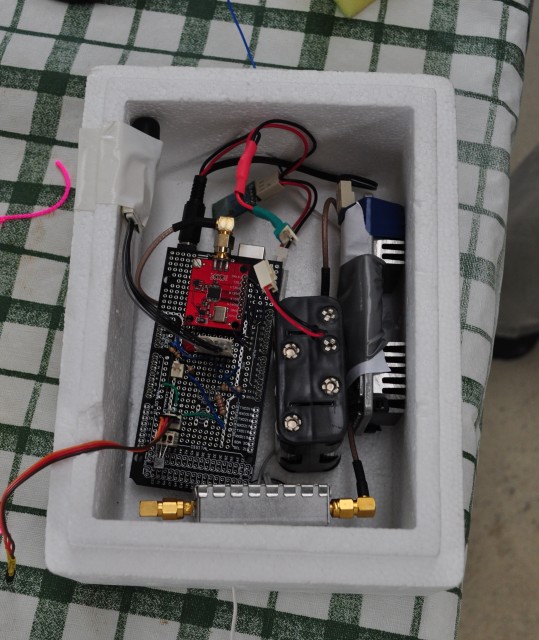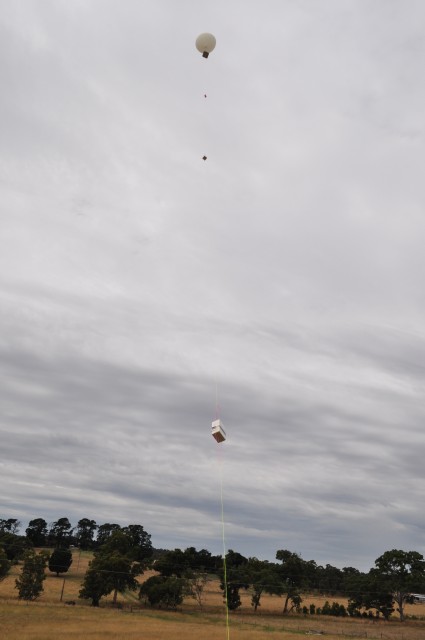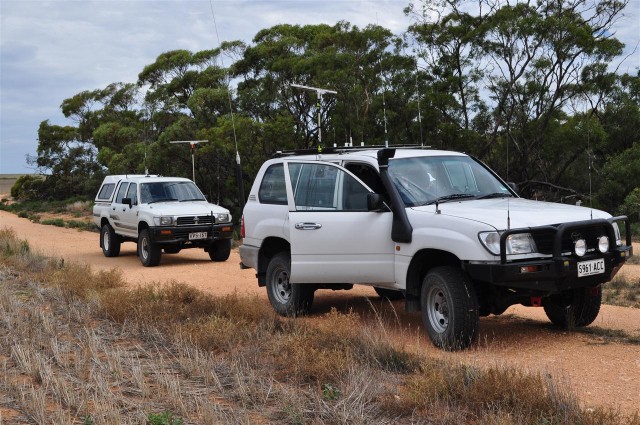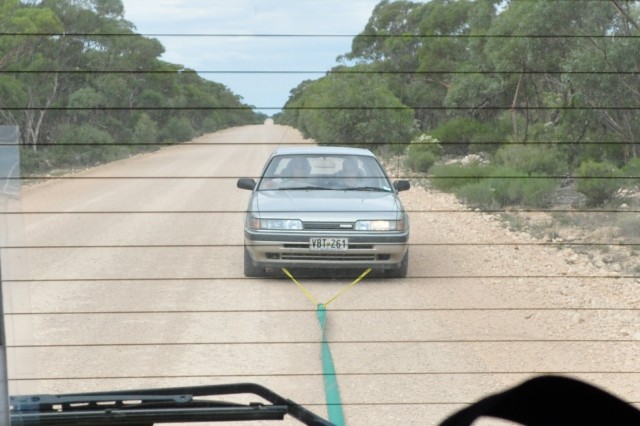Horus 15
Technical information:
| Launch date | 26/02/2011, 12:30 pm |
| Landing date | 26/02/2011, 2:30 pm |
| Flight duration | ~2 hours |
| Launch site | -35.1021, 138.825 |
| Landing site | -34.7697, 139.8589 |
| Flight path | |
| Distance travelled | 101.4 km |
| Maximum altitude | 20,290 m |
| Average ascent rate | 5 m/s |
| Impact speed | 4 m/s |
| Video camera | GoPro HD Hero |
| Flight computer | Nut 1.1 flight computer |
| GPS module | Falcom FSA03 |
| Radio transmitter | Radiometrix NTX2 25mw |
| Telemetry | 300 baud RTTY, CRC16 checksum |
| Tracking | Ground stations (distributed listener), 3 chase cars, web based tracker |
Details:
Horus 15 was a launch of a HD video payload as well as a re-fly of Mark's HF telemetry payload (the one we drowned in Horus 8!) - Mark's had added an amplifier (outputting 700mW) to his payload & reconfigured it to use a different band for the flight.
Funding for the launch was kindly provided by Adelaide University.
Preparation & Launch:
Launch preparations for Horus 15 went well for the most part inflation went as planned, and telemetry systems appeared to be working correctly with both payloads acquiring GPS lock & transmitting valid telemetry.
However, just prior to releasing the balloon, Mark realised his HF payload had stopped transmitting - we quickly pulled the balloon train down and Mark inspected the payload.
It turned out that the amplifier was putting out more heat than it could dissipate, and conditions within the payload enclosure were scorching - the lithium batteries had heated to the point where they were too hot to touch & were venting gas!
With the balloon train already in the field & wind picking up, we didn't have much choice but to remove the problematic amplifier - Mark disconnected the amp and connected the transmit antenna directly to his payload, dropping the output power to 22mW.
With the payloads operational once more, Andrew did the honours and let Horus 15 go.
Flight:
Once the balloon was airborne, our 3 chase cars set off towards the expected landing site. We had a full team on the day, with both Adrian VK5ZSN and Matt VK5ZM bringing out their trucks. Both Adrian and Matt also had HF capability aboard, and were able to receive Mark's HF payload despite the low transmit power.
Our chase tools were working well, with predictions looking constant until around the 20km point. Suddenly, the balloon burst unexpectedly and the payload started to fall back to earth, resulting in a large change in the predicted landing site - it looked as though the payload would land much further out than had been anticipated. At the time, both Adrian & Matt's chase cars were some distance away, so I decided to press on towards the landing site despite having very little fuel (note to self: refuel prior to balloon chases).
Landing:
After some scrambling, we managed to get into position to intercept the payloads as they came down - it looked as though the balloon had been caught in a storm front, the payloads came down accompanied by strong winds and rain. Despite my navigator Joel and I seeing the payloads fall to the ground, we were the last to arrive at the landing site, having tried several access roads before meeting up with the others on a dirt track a few hundred meters from the landing site. Iain VK5ZD had also shown up for the recovery, and managed to beat us too - well done Iain! ![]()
After recovering the payloads from a field, we all decided to head back to Younghusband for a BBQ and some cold beers. For me this was going to be a tight squeeze - I was almost totally out of fuel, and Iain's car (the only other petrol car) was almost out too. About 10km out of Bow Hill (my planned fuel stop) the inevitable happened & I ran completely out of fuel. Luckily, a there was no shortage of ropes and towing equipment, and Adrian was happy to tow me the rest of the way to the petrol station.
Conclusions:
Overall Horus 15 was a success, though it was disappointing to have such an early balloon burst & to have the HF payload overheat. It's possible the early burst was partially caused by old(ish) balloon stock - the onboard footage does not hint at anything particular occuring.
Despite the low transmit power on HF, the telemetry was heard and decoded in Whyalla, several hundred KM away.
A big thanks to everyone who turned out on the day, especially first time chaser Iain VK5ZD. ![]()
